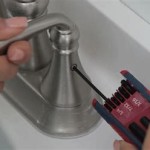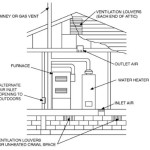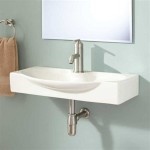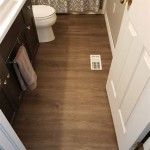How To Clean a Bathroom Sink Drain
A clogged bathroom sink drain is a common household problem. Hair, soap scum, toothpaste, and other debris accumulate over time, restricting water flow and potentially causing unpleasant odors. Regular cleaning can prevent blockages and maintain a smoothly functioning drain. Several methods, ranging from simple to more involved, can effectively clear a bathroom sink drain.
Initial Assessment and Preparation
Before initiating any cleaning method on a bathroom sink drain, conducting a preliminary assessment is crucial. Observe the rate at which water drains. A slow drain indicates a partial blockage, while standing water suggests a complete clog. Identify any visible debris around the drain opening that may be contributing to the problem. This initial check informs the subsequent cleaning approach.
Gather the necessary tools and supplies. These may include: rubber gloves, a bucket or container to catch water, a screwdriver, a plunger (preferably a flat-bottomed plunger designed for sinks), baking soda, white vinegar, boiling water, a wire coat hanger or plumbing snake, and appropriate safety eyewear. Having these items readily available streamlines the cleaning process.
Protect the sink area from potential spills or damage. Place a towel or cloth around the drain opening to absorb any splashed water or cleaning solutions. Remove any toiletries or items stored underneath the sink to provide clear access to the drainpipe and plumbing.
Simple Methods for Clearing Minor Clogs
For minor clogs, begin with the least invasive methods. These often prove sufficient for clearing small accumulations and preventing future blockages.
Hot Water Flush: Sometimes, a simple flush of hot water is enough to dislodge minor clogs. Run hot water from the faucet for several minutes. The heat can help dissolve soap scum and loosen other debris. This method is most effective for recent blockages and may not work for more stubborn clogs. Caution should be used, especially with PVC pipes. Excessive boiling water can soften or even melt PVC piping. Moderately hot water, as hot as your tap can safely produce is preferable.
Plunging: Similar to unclogging a toilet, a plunger can create suction and pressure to dislodge clogs in a bathroom sink drain. Ensure there is enough water in the sink to cover the cup of the plunger. Create a tight seal around the drain opening with the plunger. Push and pull the plunger vigorously for several minutes, maintaining the seal. Remove the plunger and check if the water drains freely. Repeat the process if necessary.
Baking Soda and Vinegar Solution: This natural cleaning solution is effective for dissolving grease and organic matter. Pour approximately one cup of baking soda down the drain, followed by one cup of white vinegar. The mixture will create a fizzing reaction. Allow the mixture to sit for at least 30 minutes, or preferably overnight. Afterward, flush the drain with hot water. The combination of baking soda, vinegar, and hot water can break down and dislodge many common types of sink clogs.
Advanced Techniques for Stubborn Clogs
If simple methods fail to clear the clog, more advanced techniques may be necessary. These methods involve accessing the drainpipe and physically removing the blockage.
The Bent Wire Hanger Method: Straighten a wire coat hanger and bend one end into a small hook. Carefully insert the hooked end into the drain opening and probe for any visible debris. Rotate the hanger and attempt to pull out any hair, soap scum, or other materials. Exercise caution not to push the clog further down the drain. Dispose of the removed debris properly. After removing as much visible debris as possible, flush the drain with hot water.
Using a Plumbing Snake: A plumbing snake, also known as a drain auger, is a flexible tool designed to reach further into the drainpipe and break up or retrieve clogs. Insert the end of the plumbing snake into the drain opening and rotate the handle to feed the snake down the drainpipe. Continue feeding the snake until you encounter resistance. Rotate the handle to break up the clog or hook onto it. Slowly retract the snake, pulling out any debris. Repeat the process as necessary until the drain flows freely. Clean the plumbing snake thoroughly after use.
Cleaning the P-Trap: The P-trap is the curved section of pipe located beneath the sink. It is designed to trap debris and prevent sewer gases from entering the bathroom. However, it can also become a major source of clogs. Place a bucket or container beneath the P-trap to catch any water. Loosen the slip nuts that connect the P-trap to the drainpipe and tailpiece using a wrench or by hand. Carefully remove the P-trap and empty its contents into the bucket. Clean the P-trap thoroughly with water and a brush. Inspect the P-trap for any cracks or damage. Reassemble the P-trap, ensuring the slip nuts are tightened securely but not overtightened. Run water to check for leaks.
Preventive Measures and Maintenance
Preventing clogs is preferable to dealing with them after they occur. Implementing regular maintenance practices can significantly reduce the frequency of bathroom sink drain problems.
Using a Drain Stopper or Mesh Screen: Installing a drain stopper or mesh screen over the drain opening prevents hair, soap scum, and other debris from entering the drainpipe. These devices are inexpensive and easy to install. Clean the drain stopper or mesh screen regularly to remove any accumulated debris.
Regular Hot Water Flushes: Periodically flushing the drain with hot water helps to dissolve soap scum and other debris before they accumulate and cause a clog. Run hot water from the faucet for several minutes at least once a week.
Avoiding Certain Substances: Refrain from pouring grease, oil, or food scraps down the bathroom sink drain. These substances can solidify and contribute to clogs. Avoid using excessive amounts of hair products or soap that can accumulate and restrict water flow.
Periodic Cleaning with Baking Soda and Vinegar: Regularly using the baking soda and vinegar solution can help prevent the buildup of organic matter and grease inside the drainpipe. Implement this cleaning method at least once a month to maintain a smoothly functioning drain.
Professional Drain Cleaning: If clogs persist despite implementing these methods, consider contacting a professional plumber. Plumbers have specialized tools and expertise to handle more complex drain problems, such as tree root intrusions or collapsed drainpipes. Professional drain cleaning can provide a long-term solution and prevent future issues.
Proper tool use is important. Using excessive force when using a plumbing snake can damage the drain pipe. Always insert and retract the snake slowly, feeling for resistance rather than forcing the tool. When tightening slip nuts on the P-trap, hand-tightening is often sufficient. Overtightening can crack the plastic components. If using a wrench, apply gentle pressure.
Safety precautions should always be followed. Wear rubber gloves to protect hands from bacteria and chemicals. Use safety eyewear to prevent splashes from entering the eyes. Work in a well-ventilated area, especially when using chemical drain cleaners, although chemical drain cleaners are not recommended due to their corrosive nature and potential to damage pipes. Never mix different types of drain cleaners, as this can create dangerous fumes. If unsure about any step, consult a professional plumber.
Ultimately, a proactive approach to bathroom sink drain maintenance is the most effective strategy. Regular cleaning, the use of drain stoppers, and avoiding problematic substances can significantly reduce the likelihood of clogs and ensure a smoothly functioning drain system. Addressing minor issues promptly prevents them from escalating into more serious problems that require professional intervention.

3 Ways To Clean A Bathroom Sink Drain Wikihow

5 Natural Ways To Unclog A Bathroom Sink Hiller How

Best Ways To Clean Your Bathroom Sink Drain Yourself

Simple Bathroom Sink Drain Cleaner The Family Handyman

3 Ways To Clean A Bathroom Sink Drain Wikihow

Drain Cleaner And Opener Guide

How Often Should I Clean My Drains At Home

How To Clean A Stinky Sink Drain By Home Repair Tutor

How To Clean A Clogged Sink Remove Stopper

How To Make Eco Friendly Sink And Drain Cleaner Bond Cleaning In Brisbane
Related Posts







